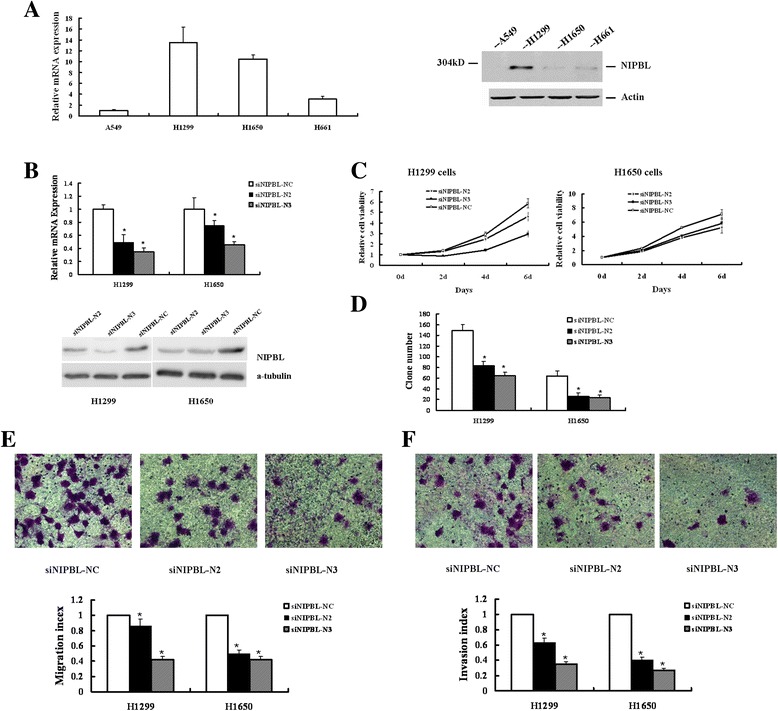Figure 3.

Knockdown of NIPBL inhibited proliferation, migration, and invasion in H1299 and H1650 human NSCLC cell lines. (A) RT-PCR analysis of NIPBL mRNA level and Western blot analysis of NIPBL protein level in four human NSCLC cell lines. (B) Relative levels of NIPBL mRNA and protein expression in H1299 and H1650 lung cancer cells transfected with siNIPBL-N2, −N3 or –NC (non-targeting scramble control siRNA). Based on morphometric analysis of immunoblot data, in H1299 cell line, siRNA-N2 caused 47 ± 6% reduction, and siRNA-N3 caused 29 ± 4% reduction in NIPBL protein level, in H1650 cell line, siRNA-N2 caused 41 ± 4% reduction, and siRNA-N3 caused 43 ± 7% reduction in NIPBL protein level. (C) In vitro growth curves of H1299 and H1650 NSCLC cells which transfect with siNIPBL-N2,-N3, and –NC for 0–6 days. Cell viability was determined by MTT assay. For colorimetric analysis, the absorbance value (OD) at 490 nm was measured in the cells which cultured for 4 h, as the baseline of day0. Data represented mean ± SD for three replicate experiments. (D) Clone formation assays of NIPBL knockdown H1299 cells and H1650 cells. Cells were seeded at the cell numbers indicated, stained with crystal violet after 2 weeks’ culture. Experiments were performed in triplicates. (E) The in vitro migratory ability of NIPBL downregulated H1299 and H1650 cells was determined by in vitro migration. Cells migrated through the memberane were viewed at × 400 magnifications under light microscope, counted in 4 independent visual fileds SEMper transwell membrane. Cell numbers were presented as values of means ± SD of triplicate experiments. * P <0.05. (F) The in vitro invasive ability of NIPBL downregulated H1299 and H1650 cells was further determined by same assay, as described in (E).
